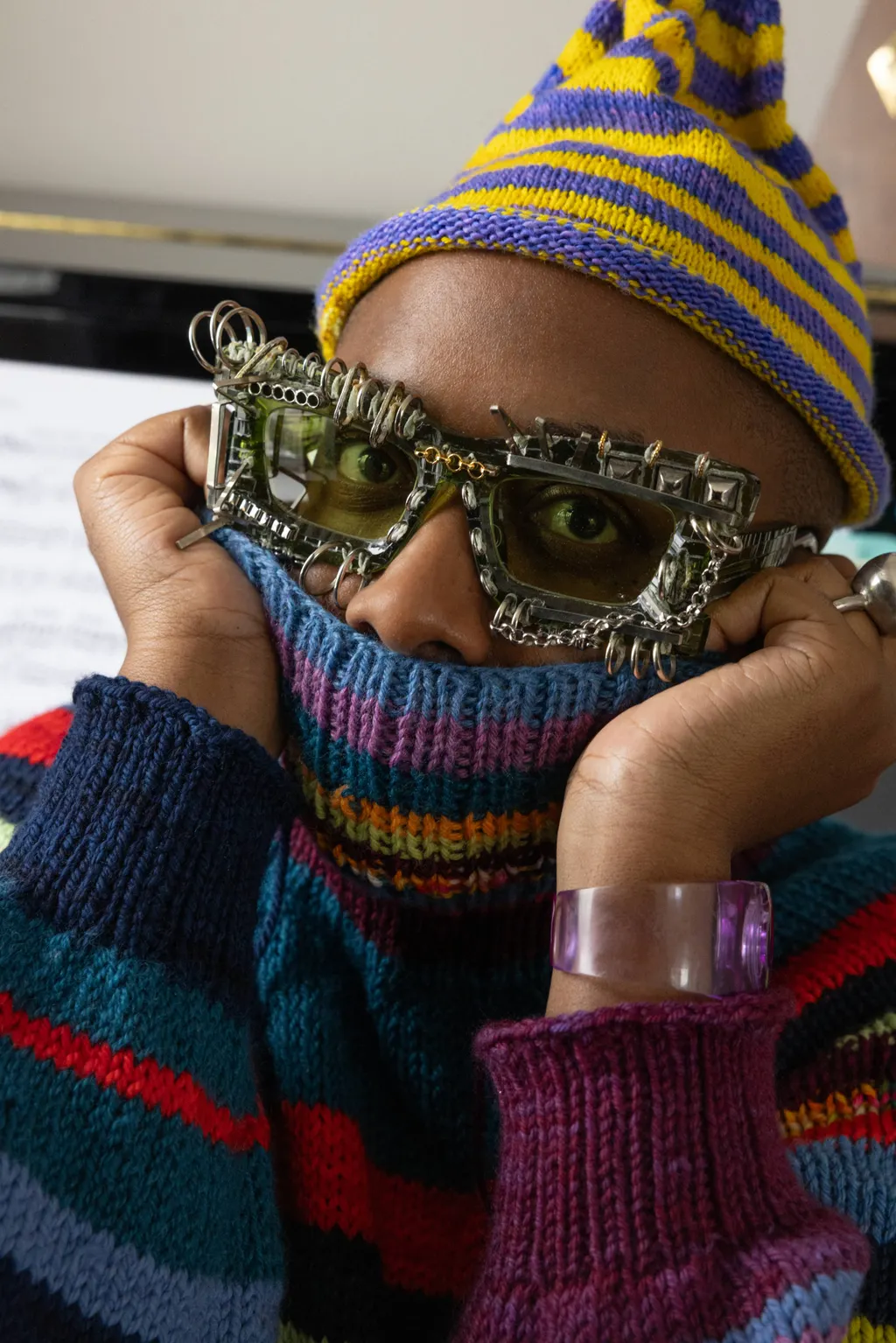Cécile McLorin Salvant
March 25, 2026
gallagher student center theater

The first thing to know about Oh Snap, Cécile McLorin Salvant’s new suite of original songs, is that it was never intended to leave the hard drive of her computer. Ever.
The singer and composer wrote these short, intensely personal pieces as part of a creative quest: To place spontaneity and joy at the center of her writing process.
After years of writing and recording visionary—and critically acclaimed—Nonesuch albums like Ghost Song (2022) and Mélusine (2023), Salvant challenged herself to approach composition in new ways. “I felt I had lost a connection to music because it was something that I felt I should do in a certain way and do well,” Salvant confides. “I thought, ‘How can I bring music back in close to me, intimately?’ The only way to do that was if it felt like no one would hear it, including other musicians.”
So the vocalist and composer—who’s won the Best Jazz Vocal Album Grammy three times and was the recipient of a MacArthur “genius” fellowship in 2020—put together a computer music rig. She explored the seemingly limitless tones and combinations, menu by dropdown menu. She was not, she says, looking for some reasonable facsimile of, say, an acoustic bass, but rather some growling bass synth that made her want to play more. Hear more. Sing a melody around it.
“I thought, ‘What would I build if I could just build it alone, based on who I am?’” Salvant says. “I was thinking about how free and playful I am with drawing, which I have no training in, but which gives me so much joy. I’m not in the art scene, so I don’t know the different movements that people find themselves in. And it doesn’t matter what I do. I thought, ‘How could I approach music this way? How could I use music as a way of journaling?’”
Salvant began this inquiry during the pandemic, and says she quickly found herself in the wide-open wilderness of “what if?,” chasing down—and then capturing—whatever wild ideas popped into her head. She layered sounds into thick textures, constructed verse sections and hooks and then, through the magic of cut-and-paste, gleefully rearranged them. Among these were quiet folk songs, party tracks with beats, careening samba grooves, and meditations on meditation.
She felt no need to evaluate the results. It was fun, Salvant recalls, so she kept going. Significantly, she didn’t stop to think about who the music was “for,” or who might hear it. “Nothing really was planned or calculated in a way that was in consideration of the listener other than myself as the listener. The structures of all the songs, I would say, or of most of the songs, are completely tailor-made to my own enjoyment. That might sound really self-indulgent, but it’s the truth. Eventually, I opened up, but yes, it was meant to be in those little folders on my desktop.”